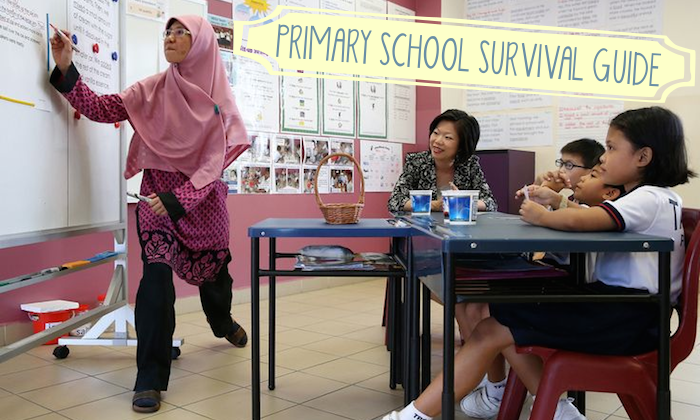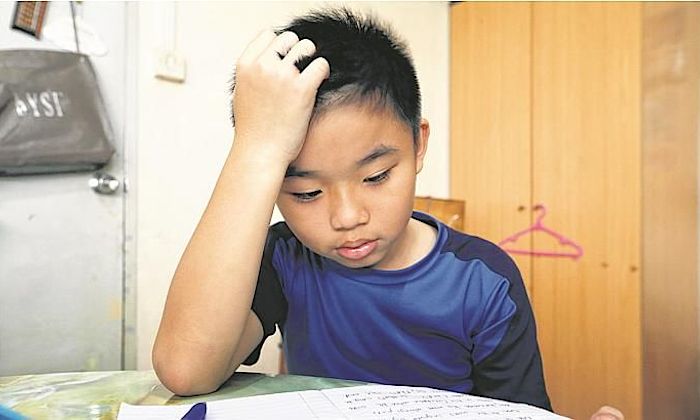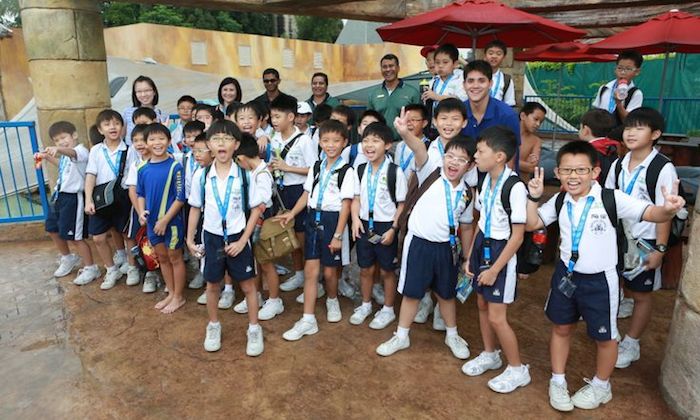

In April I wrote about how transitioning from kindergarten to local Primary 1 could involve culture shock for both parents and students alike. My daughter Elanor has now completed the first half of Primary 1 in Singapore, and apart from missing her kindergarten friends, hating her much earlier wake up time, and complaining that the mandated school socks “make my feet sweaty”, the change has been a painless one for her. She’s made a group of friends, including a “BFF” (best friend forever).
In many ways, the first half of Primary 1 has been no different than what we would expect at any school; getting to know the building, the teachers, and the routines. What makes it very different from our lived experiences as students and my own as a teacher are the academics and moments of culture shock. For everyone involved, the last six months have been quite the learning experience, pun intended.
Elanor’s classroom is pretty typical, although the colours are more neutral than the primary colours favoured back home. Children’s desks are clustered into groups. The teacher’s desk has a camera that projects onto a screen at the front of the classroom, a set-up I would’ve killed for in my former classrooms. Student artwork is posted, as are the current English vocabulary words. When in-class work is completed, the children like to spend time in the classroom library or, in Elanor’s case, the Math games corners.


In the first term, Elanor’s homework consisted only of studying the words for the English and Mandarin spelling tests. Occasionally if a piece of work wasn’t completed in class, it would come home. As Singapore’s public schools do expect students to read and write on day one of P1, it’s unsurprising that they give spelling tests, although my eyebrows did lift at words like “crocodile” and “elephant” in week 6 (lists are drawn from the STELLAR literacy system books).
In term two the weekly spelling tests were still part of our routine, but a daily English assignment was added. Two vocabulary words were assigned and students had to use the word correctly in a sentence. This seemingly straightforward assignment ended up causing a great deal of cross-cultural confusion. Elanor wrote a sentence with the word “Mommy” in it. Her English teacher marked the word wrong and corrected “Mommy” to “Mummy.” I wrote a note to the teacher explaining that we’re American, so she and her sister use “Mommy.” The teacher shared with me that she’d forgotten Elanor isn’t Singaporean; her last name, appearance, and accent allow her to pass as a natural born citizen. This is a testament to Elanor’s ability to blend given that I never remember to use local spelling of words like color (sorry, colour).
The volume of paperwork requiring a parent signature can be daunting. These include weekly spelling tests (English and Mandarin), the worksheets for each book in the STELLAR curriculum, and in the student handbook there’s room for a signature next to each assignment written down. At the end of the term there is a folder where a parental signature is needed for almost every assignment included. The message is clear—parents are required to be involved in their child’s progression, eliminating the possibility that a parent could tell a teacher “but I had no idea how badly s/he was doing!” For us, the exception is Mandarin, which we don’t understand, leading to countless WhatsApp pictures sent to our tutor and friends captioned “What am I signing?”.


Given the sheer volume of student work I’ve been asked to sign, I expected grades to similarly reflect said volume of work. Instead, first semester grades were entirely dependent upon assessments. A single test determined the first semester Math grade. In retrospect, this explains why the other parents in my WhatsApp group were freaking out over the test and seemed confused that I wasn’t (answer: blissful ignorance). The Mandarin grade was determined by two assessments and the English by three, each looking at a different aspect of linguistic development. During orientation parents were told that the MOE had eliminated the high-pressure exams from P1/P2. Seeing how grades are calculated, a “high pressure exam” sounds terrifying, much less the PSLE. Report cards do include a holistic assessment of skills, however, which are derived from the work done throughout the term.
How do I feel about choosing a local school six months in? As parents, there have been times where we have triple guessed our choice. What calms us is that Elanor doesn’t have culture shock, is happy, and is blossoming. She now reads the Geronimo Stilton books to which her friends introduced her. She adores her Math teacher and says it’s her favorite (sorry, favourite) subject after Art. June holidays have been a welcome respite from the academics, but we look forward to supporting Elanor as she continues to tackle P1 once she returns to school on June 29.






 View All
View All





 View All
View All








 View All
View All




